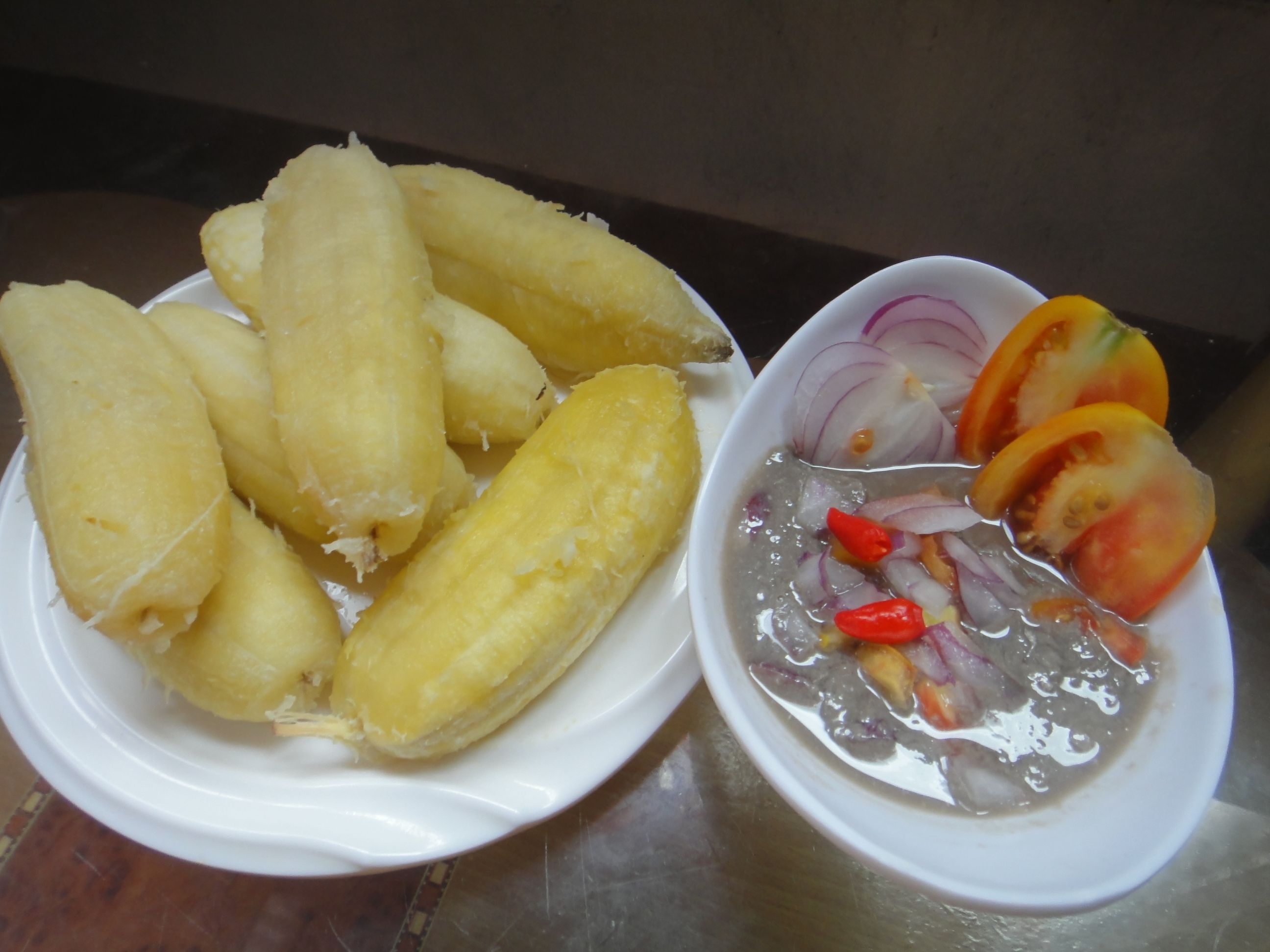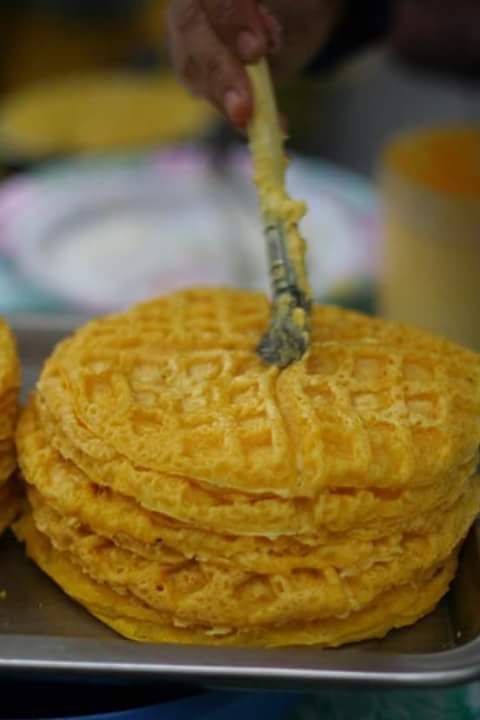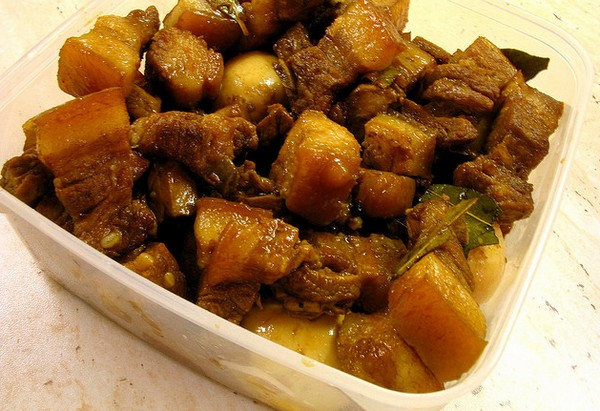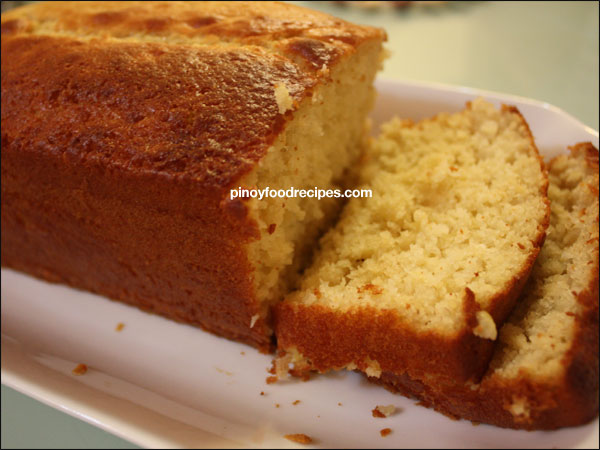The Philippines is a generous host to those with a sweet tooth. That’s because there are so many traditional Filipino desserts you can try out. Plenty of cultural influences to take credit, combined with Filipino flair and creativity, have resulted in a wide variety of Pinoy sweets sure to soothe your sugar craving.
Significance of desserts in Filipino culture
Desserts are essential in Filipino food culture and are frequently offered at celebrations, religious festivals, and special occasions. Desserts are not only considered as a sweet treat in Filipino culture, but also as a symbol of hospitality, generosity and a method to express love and gratitude to guests.
Filipino desserts are frequently produced with simple, inexpensive ingredients such as rice flour, coconut milk, sugar, and fruits. This demonstrates the Filipino people’s resourcefulness and ability to create delectable delights with limited resources.
Desserts are firmly embedded in Filipino family customs and are frequently passed down from generation to generation. They serve as a means of connecting with one’s cultural background and preserving past practices.
Furthermore, sweets are an essential component of Filipino cuisine, contributing to the variety of flavors and textures present in Filipino foods. They highlight the distinct mix of Spanish, Chinese, Malay, and indigenous influences that have influenced Filipino cuisine.
Traditional Filipino desserts
These classic Filipino desserts are enjoyed by people of all ages and are frequently offered during special occasions, religious festivals, and family gatherings.
- Kakanin – a rice cake made with glutinous rice flour and coconut milk. Some popular varieties include biko, bibingka, and palitaw.
- Halo-halo – a refreshing dessert made with shaved ice, sweetened beans, jellies, fruits, and evaporated milk.
- Leche Flan – a creamy and sweet custard made with eggs, milk, and sugar, usually topped with caramelized sugar syrup.
- Turon – a fried snack made with sliced banana and jackfruit wrapped in a thin pastry wrapper, usually drizzled with caramelized sugar syrup.
- Ube Halaya – a sweet and creamy dessert made with purple yam, coconut milk, and sugar, often used as a filling for cakes or eaten on its own.
Modern Filipino desserts
These modern Filipino desserts often incorporate traditional Filipino ingredients and flavors while also adding unique twists and combinations to create new and exciting desserts that appeal to a wider audience. They are often served in restaurants, cafes, and bakeries and have become popular in the Philippines and worldwide.
- Mango Float – a dessert made with layers of graham crackers, whipped cream, condensed milk, and fresh ripe mangoes.
- Black Sambo – a colorful dessert made with layers of flavored jelly and whipped cream, usually served chilled.
- Brazo de Mercedes is a rolled cake made with a soft meringue-like base filled with sweet custard cream.
- Buko Pandan Salad – a refreshing dessert made with young coconut meat, pandan-flavored gelatin, tapioca pearls, and sweetened cream.
- Yema Cake – a moist and fluffy sponge cake filled with sweet yema filling made from condensed milk, egg yolks, and butter.
Regional variations of Filipino desserts
These regional varieties of Filipino sweets reflect each region’s different cultural and culinary influences, highlighting the unique ingredients and flavours that distinguish each region’s cuisine.
Visayas Region
a. Binagol – a sweet delicacy made of taro root, coconut milk, sugar, peanuts, and other flavorings, traditionally cooked inside a coconut shell.
b. Piaya – a flatbread filled with muscovado sugar and sometimes flavored with sesame seeds, a popular sweet snack in Negros Occidental.
c. Napoleones – a layered pastry filled with sweetened cream, popular in Bacolod City and made with a flaky crust similar to a mille-feuille.
Mindanao Region
a. Suman – a sweet and sticky rice cake wrapped in banana leaves, typically flavored with coconut milk and sugar.
b. Pastel – a soft bread roll filled with sweet and creamy yema filling, popular in Cagayan de Oro.
c. Durian Candy – a sweet candy made with durian fruit and sugar, a popular souvenir from Davao.
Luzon Region
a. San Nicolas Cookies – bite-sized cookies flavored with anise and shaped like flowers, popular in the Ilocos Region.
b. Kakanin Puto – a steamed rice cake made with rice flour and coconut milk, popular in the Tagalog region and served with grated coconut.
c. Tibok-tibok – a sweet pudding made with carabao’s milk, cornstarch, and sugar, typically found in Pampanga.
Fusion Filipino desserts
Fusion Filipino desserts combine traditional Filipino ingredients and flavors with modern and international cooking techniques and ingredients, resulting in unique and innovative desserts that are both familiar and exciting.
- Ube Cheesecake – a cheesecake flavored with ube, a popular Filipino purple yam, often topped with macapuno, a sweetened coconut sport.
- Mango Tres Leches – a twist on the classic tres leches cake, incorporating fresh mango puree and mango slices, topped with whipped cream.
- Bibingka Waffles – a fusion of bibingka, a traditional Filipino rice cake, and waffles, served with butter, grated coconut, and muscovado sugar.
- Turon with Ice Cream – a dessert that takes the traditional Filipino turon, a fried banana roll, and serves it with a scoop of ice cream, often with unique flavors such as ube or calamansi.
- Leche Flan Brulee – a combination of the classic Filipino dessert, leche flan, and French creme brulee, with a caramelized sugar crust.
Fusion Filipino desserts are popular in modern restaurants and bakeries, and reflect the evolving tastes and preferences of the younger generation of Filipinos. They also offer a way for non-Filipino customers to experience the unique flavors and ingredients of Filipino cuisine in a new and innovative way.
So set aside that chocolate cake, doughnuts or ice cream, and you’ll find them easily. Instead, try these wonderfully made Filipino desserts.
Puto
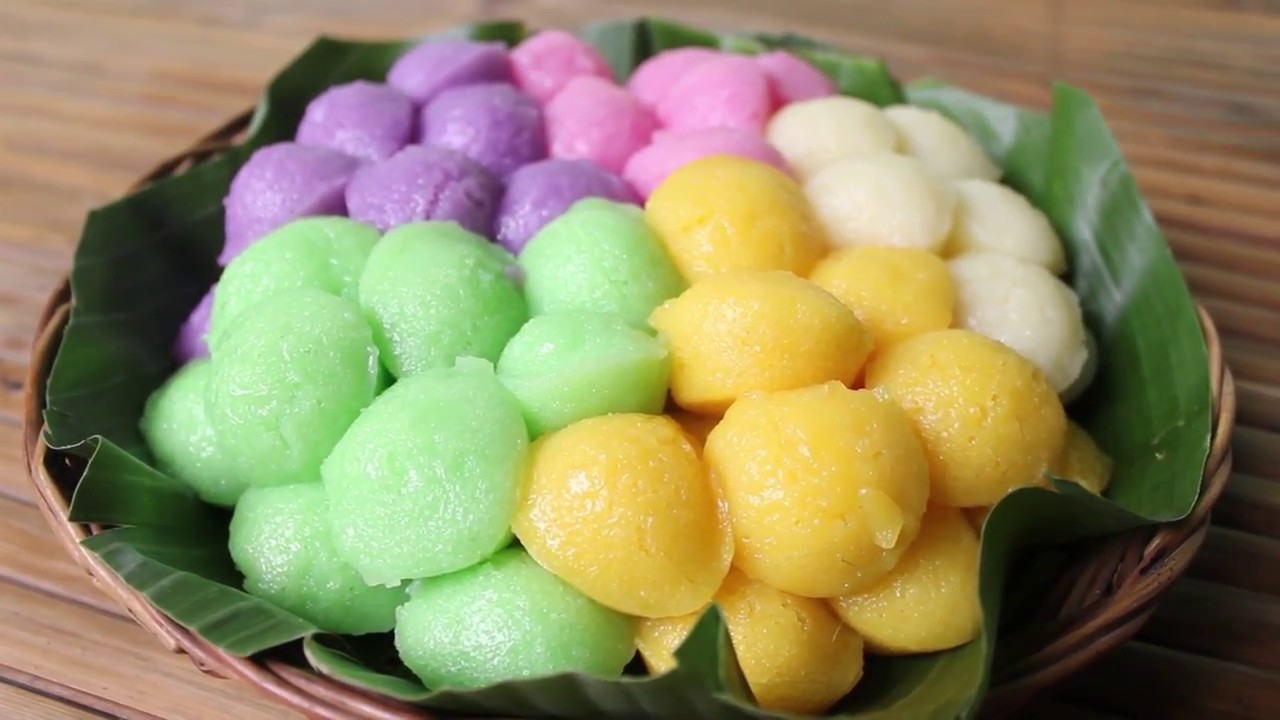
Puto is a quintessential Filipino dessert; made of simple ingredients and prepared simplistically. It’s a steamed rice cake that can be consumed by itself or garnished with cheese or butter to add flavor. It is also a popular tandem with dinuguan. This spongy snack now comes in a variety of flavors, from pandan to ube to cheese. A finished product exudes a vibrantly colorful display when sold in bakeries and supermarket stalls.
Leche flan
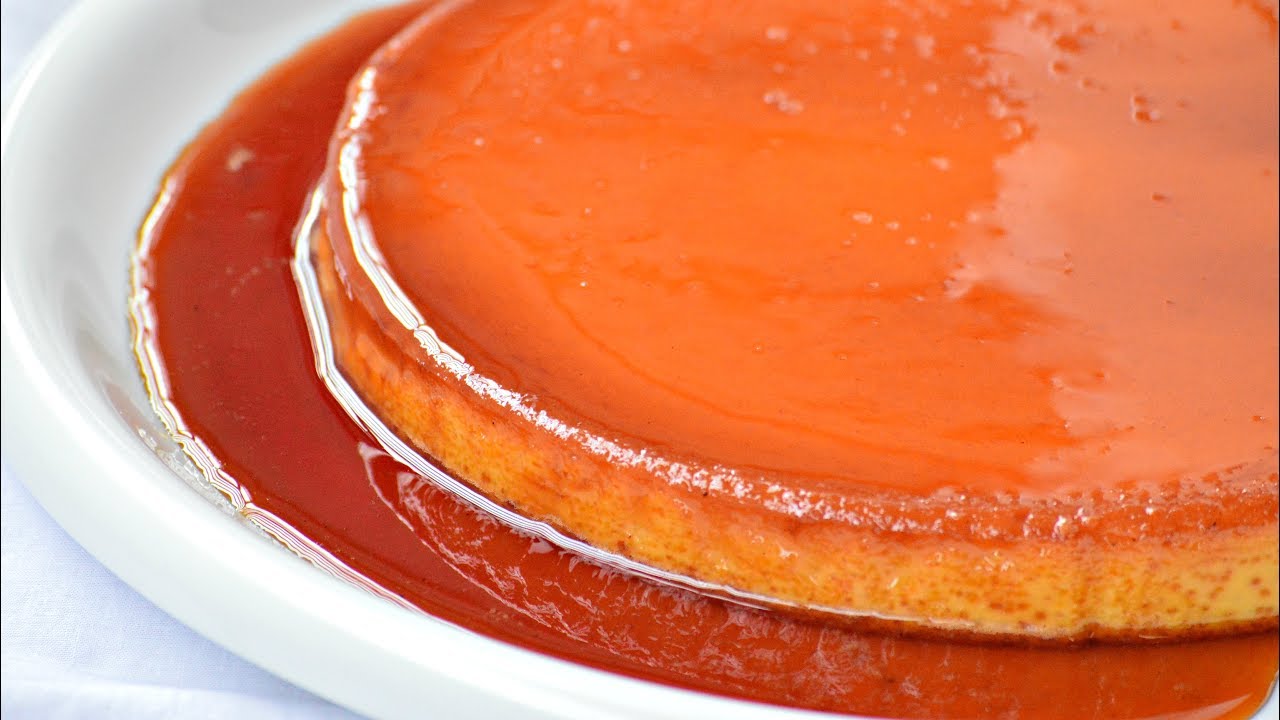
The Filipino version of crème caramel has one of its two main ingredients in its name. Leche, the Spanish word for milk, is one, and others include egg yolk, evaporated and sweetened condensed milk. It is a custard dessert with a layer of bright caramel sauce, as opposed to crème brûlée, which is custard with an added hard transparent caramel layer on top.
Halo-halo
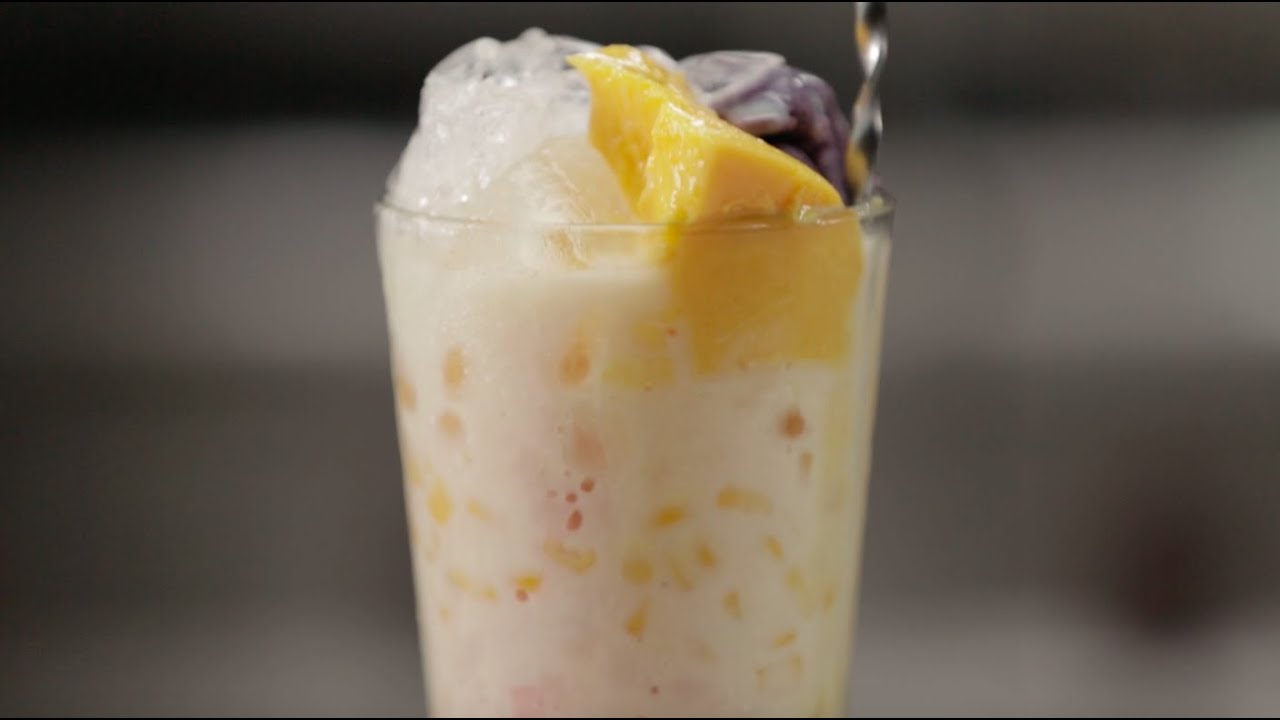
Halo-halo (literally translated as mix-mix) is a crowd favorite, thanks to the hot climate of the Philippines. It is a melange of shaved ice, sweet red bean, sweet white beans, coconut gel, sago pearls, cut jackfruit, evaporated milk, and ube ice cream. The list could go longer as there’s no limit as to what you can add to enhance halo-halo’s flavor.
It has become so popular that popular fast food chain Chowking has made halo-halo a permanent fixture in its menu.
Taho
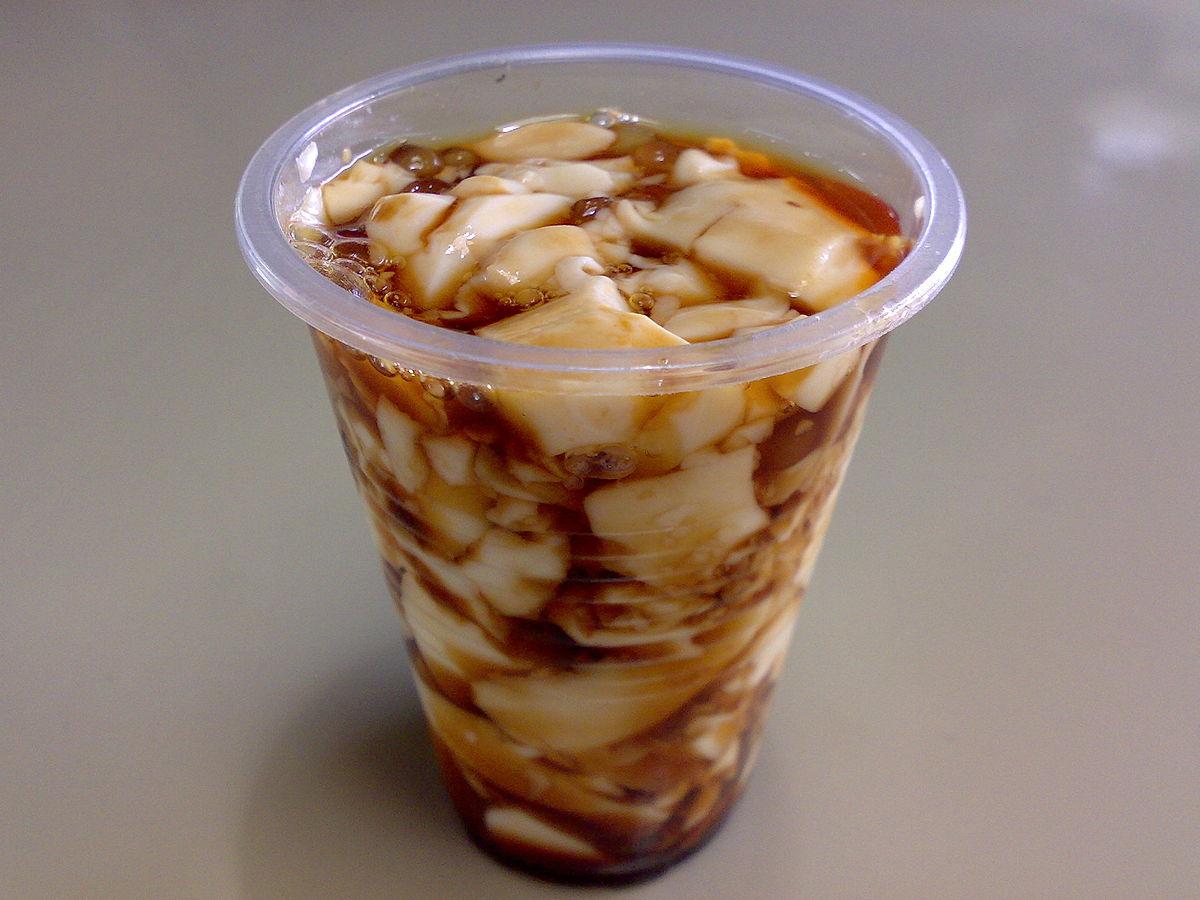
Taho is a snack food made of fresh soft tofu, arnibal (a mixture of brown sugar and water), and sago pearls. Taho peddlers sell this type of Filipino dessert carried in a pair of aluminum buckets in a yoke at markets or busy neighborhood streets with a familiar ringing call “Tahoooo!”.
This warm concoction is a perfect welcome to start the day, especially during chilly mornings, but consumed well as a mid-afternoon snack or any other time of the day.
Kutsinta
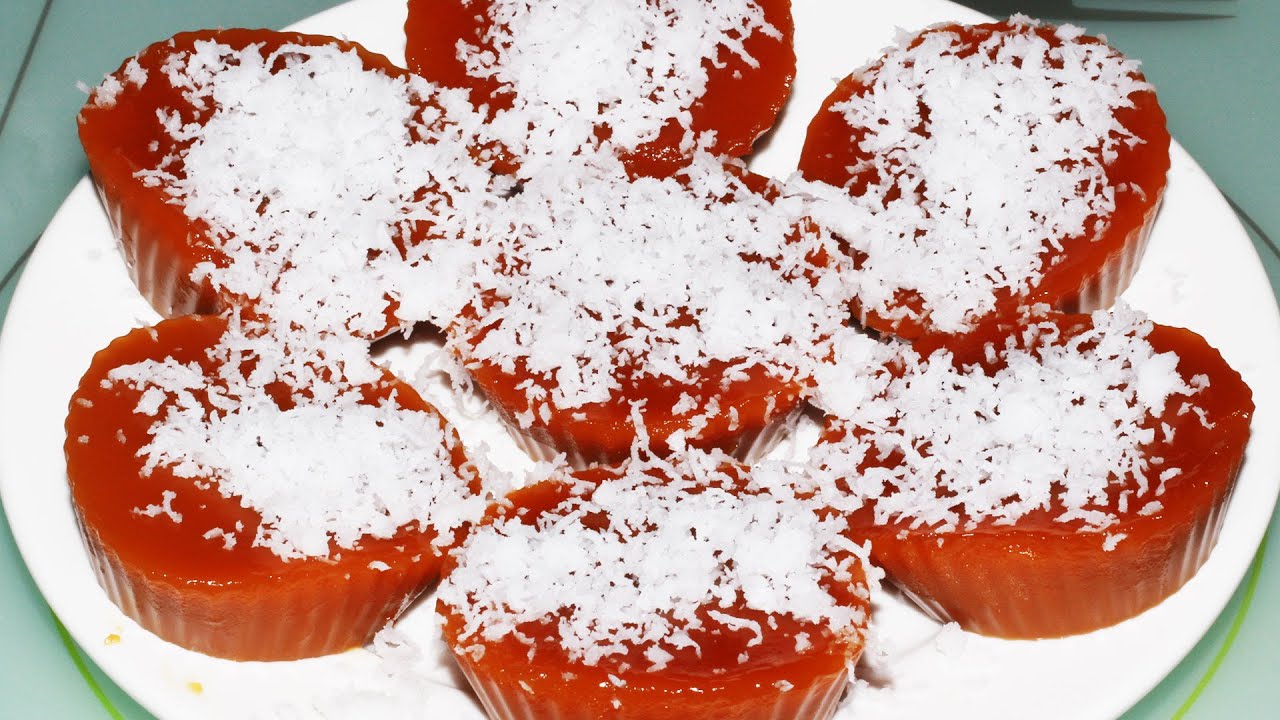
Just like puto, puto cuchinta or kutsinta is also a steamed rice cake but has a different color and texture. Unlike the soft and spongy puto, kutsinta has a sticky and slightly rubbery feel. It is a mixture of rice flour, brown sugar, and lye, enhanced with yellow food coloring or annatto extract, and steamed in small ramekins. The cooked cakes are topped with freshly grated meat from mature coconut.
Turon
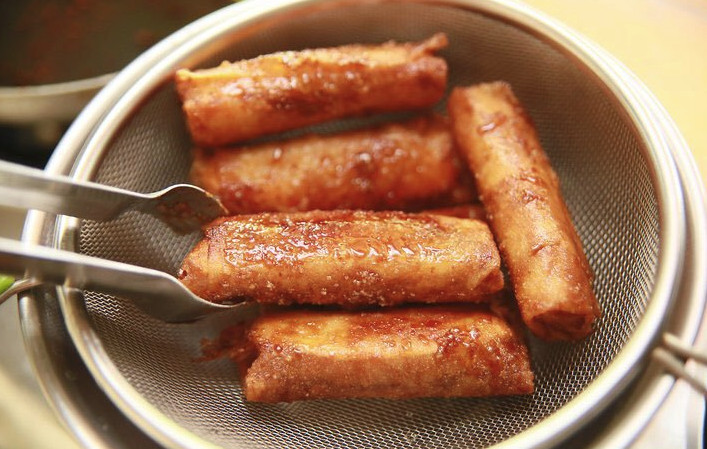
With striking similarity in appearance with spring roll, turon is also known as lumpiang saging. That’s because its ingredient is mainly slices of saba banana, wrapped in spring roll, rolled in brown sugar and deep fried. Jackfruit is also added in the mix to enhance its flavor.
Streetside food vendors usually sell Turon as a cheap merienda. But its straightforward way of cooking makes it easy to prepare at home.
Biko
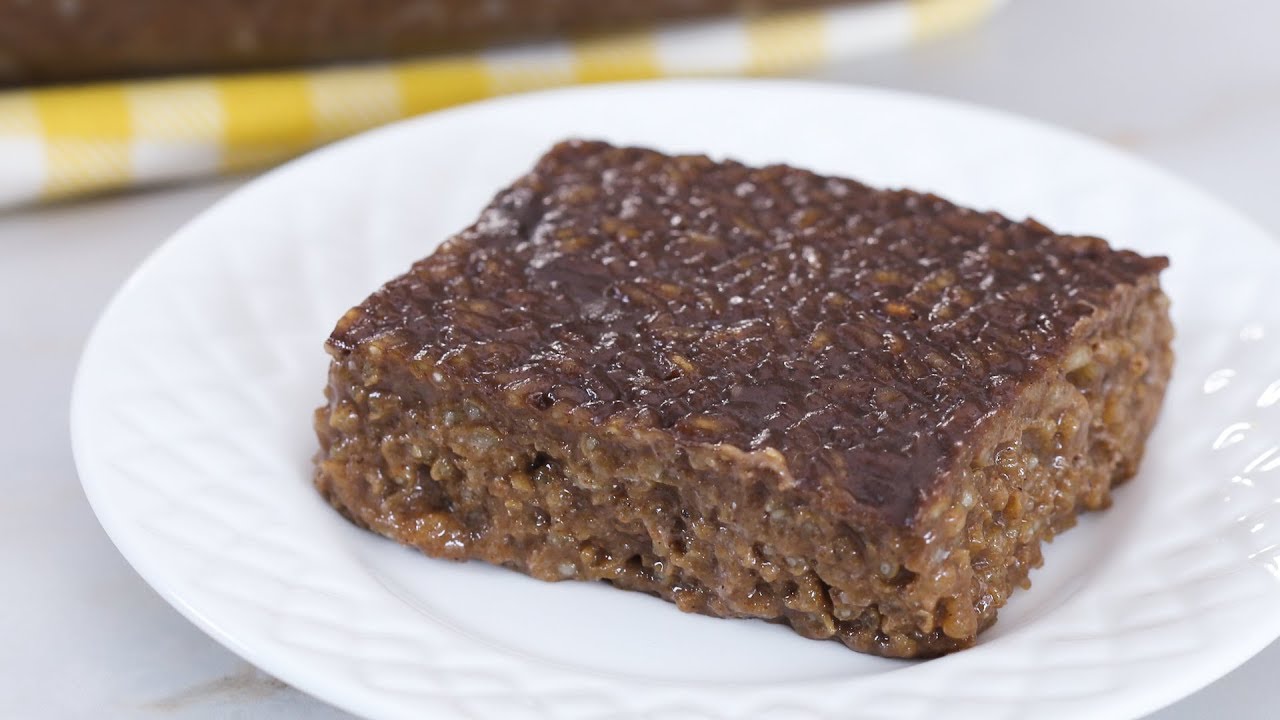
Biko (also known as sinukmani) is a sweet rice cake made of coconut milk, brown sugar (muscovado or panutsa is a better option), and glutinous rice. It is usually topped with latik or a syrupy caramelized coconut cream used as a dessert sauce. It is a type of kalamay dish and is prepared similarly, except the rice grains are not ground into a paste. They are also sometimes packaged and sold as suman.
Bibingka
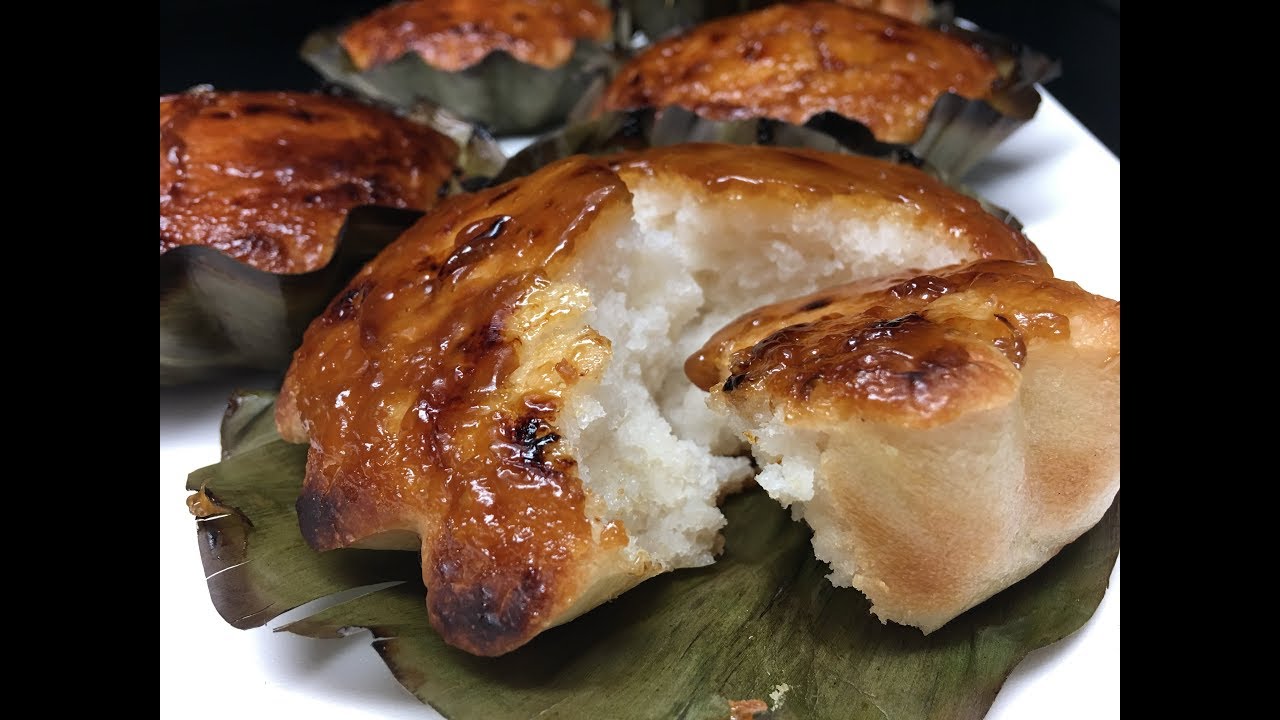
Another type of rice cake is bibingka, traditionally made from galapong (milled glutinous rice), coconut milk, margarine, and sugar. It is usually served during fiestas and the Christmas season. It is traditionally cooked in clay pots lined with leaves. There are also other varieties of bibingka cooked differently and garnished with cheese, and paired with hot chocolate, or kapeng barako, a pure strong coffee in the Philippines.
Ginataan
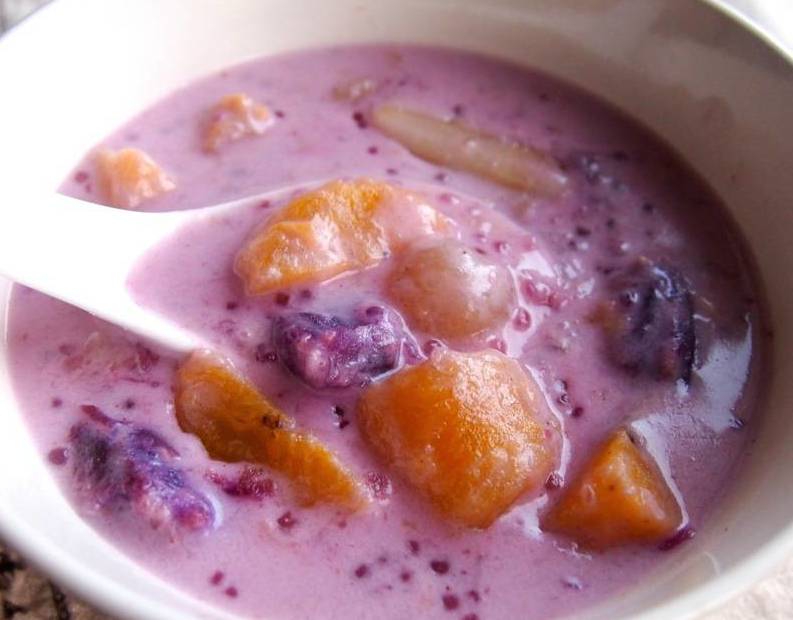
“Ginataan” refers to food cooked in coconut milk. Ginataang bilo-bilo is a sweet treat made of sticky rice balls and other tropical ingredients such as tapioca pearls, yams, sweet potatoes, plantain bananas, and jackfruit and coconut milk. Its taste can be comparable to a fruit salad, though it is best served hot.
Banana Cue
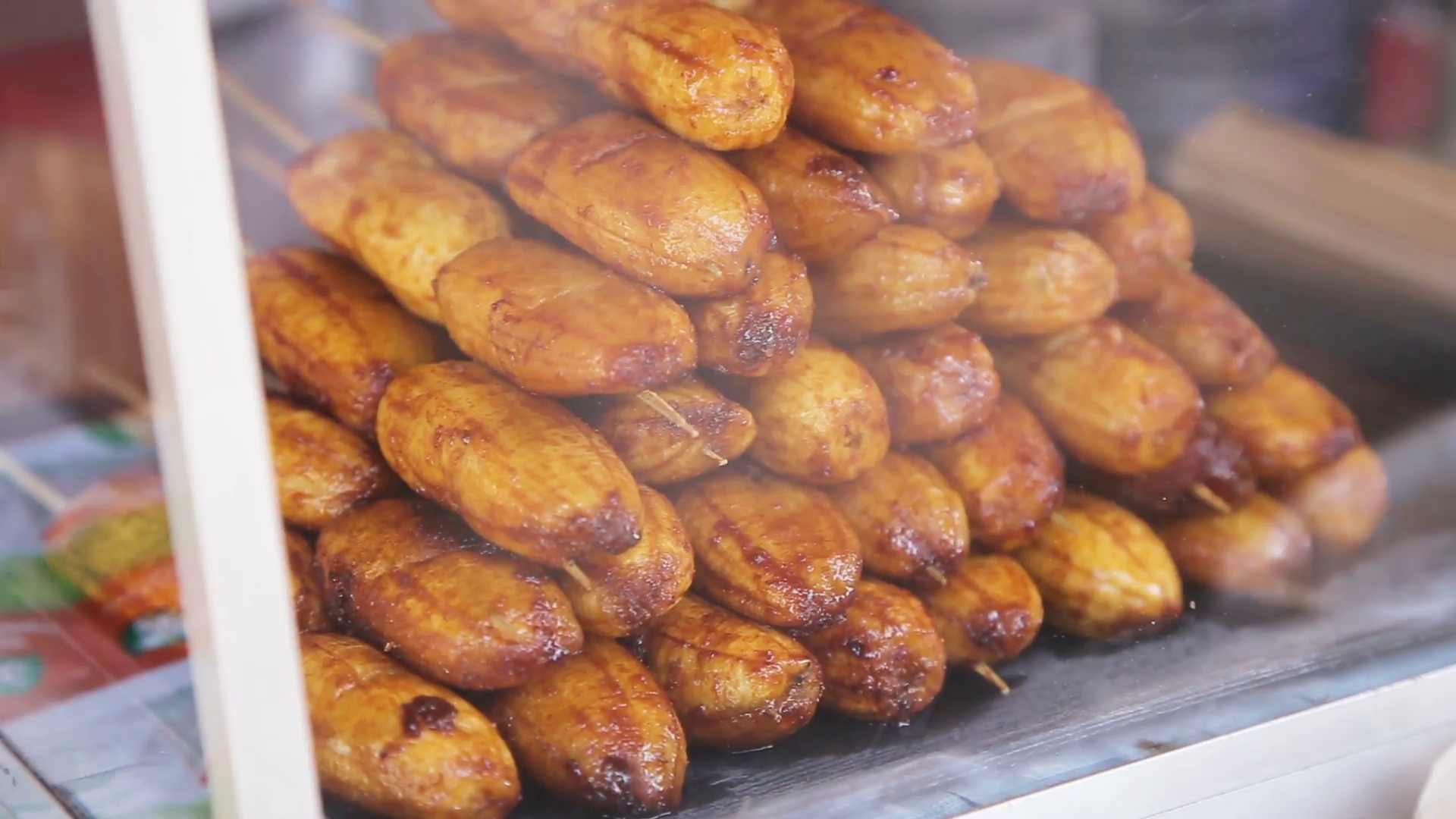
Banana cue, maruya, or banana barbecue is a popular banana snack food on bamboo skewers or street food in the Philippines. Prepared in the same way as turon, a banana cue is even more straightforward to make. The main ingredient is saba banana and minor ingredients sugar and cooking oil plus banana skewer. It is usually sold in streets and is a Filipino favorite as mid-afternoon snacks.
Halayang Ube
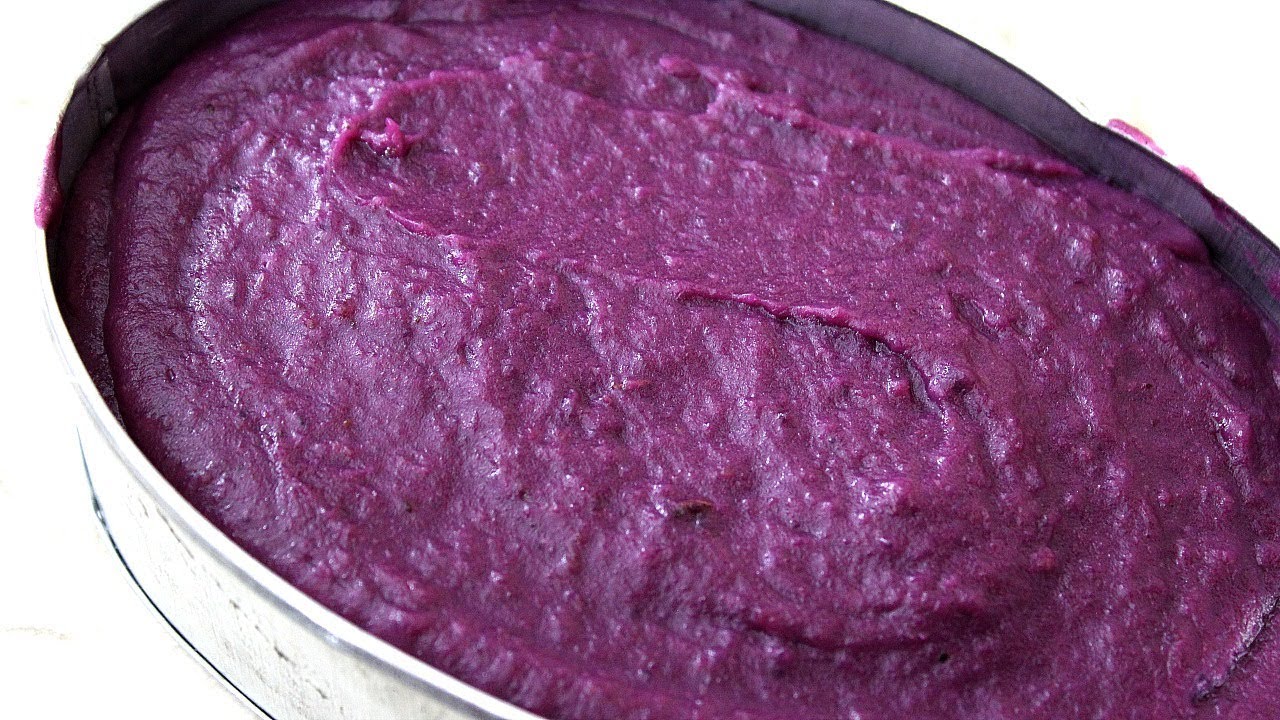
Halayang ube or ube jam is a Filipino dessert made from boiled and mashed purple yam, mixed with coconut milk, condensed milk, cheese, and butter. It can be eaten on its own or can be used as topping for other desserts like ice cream, cake, filling for hopia, and so on.
Otap
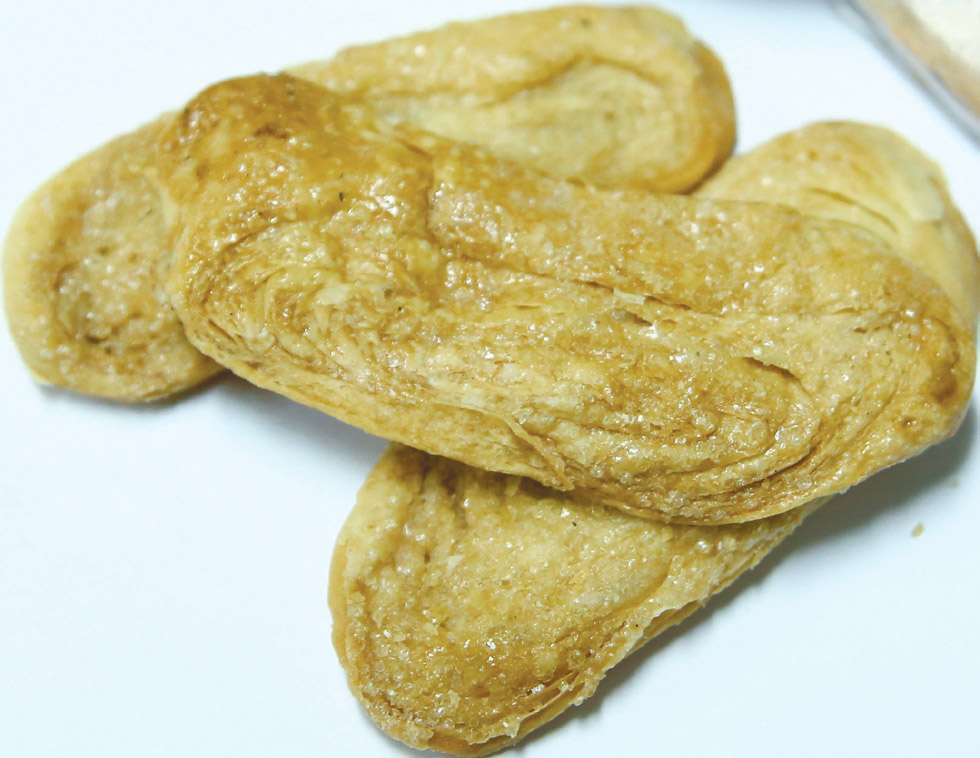
Otap (sometimes spelled as Utap) is an oval-shaped puff pastry cookie and is commonly found in Cebu where it originated. It has a flaky, brittle, and crumpled surface that is sprinkled with sugar. Eating this pastry would entail cautiousness, as fragments and bits of sugar may fall on the floor as you take a delicious bite. It usually consists of a combination of flour, shortening, coconut, and sugar.
Bukayo
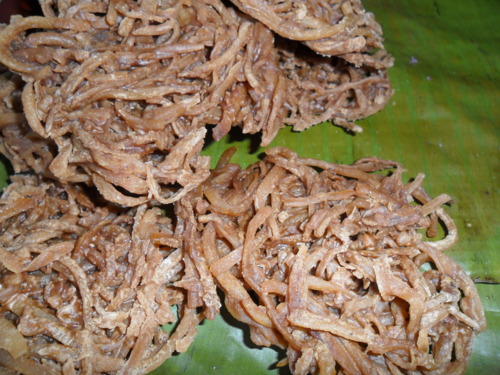
Bukayo is a sweet Filipino dessert / snack made from sweetened grated coconut strips. Made of coconut strips in a mixture of coconut water and muscovado sugar simmered until liquid is massively reduced. The mixture is then formed into balls or flat circles and left to harden to a chewy consistency.
Ginanggang
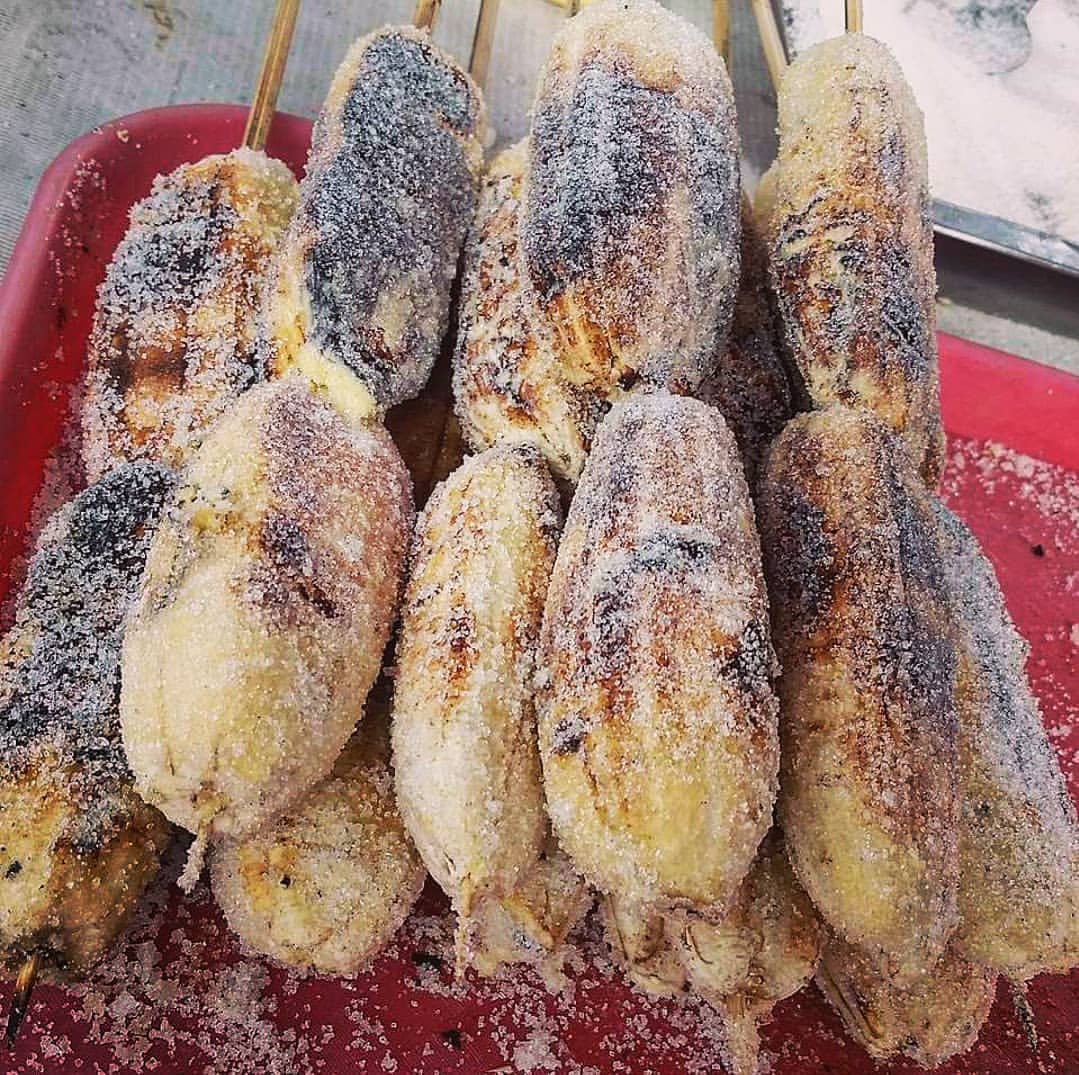
Ginanggang (also spelled guinanggang or ginang-gang) is a snack food of grilled skewered bananas brushed with margarine and sprinkled with white sugar. The name means “grilled” in Cebuano. Same as banana snacks maruya and banana cue, ginanggang also uses saba variety of Philippine banana. It is frequently found in the streets of Visayas and Mindanao.
Pinoy hotcake
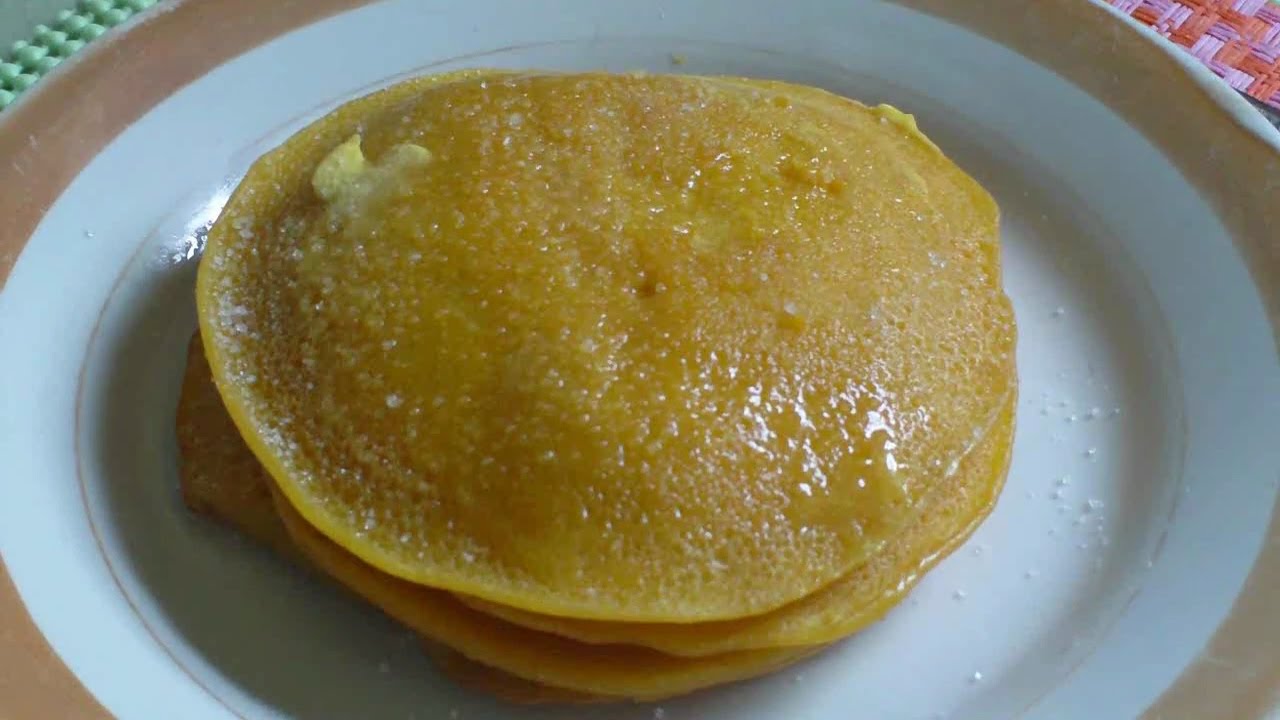
It is the Philippine street food that’s best eaten hot, hence the name “hot cake.” Before serving, each hotcake is slathered with margarine or butter and sprinkled with white sugar. This type of pancakes are usually found on the sidewalks in the Philippines, but also easy to prepare at home.
Palitaw
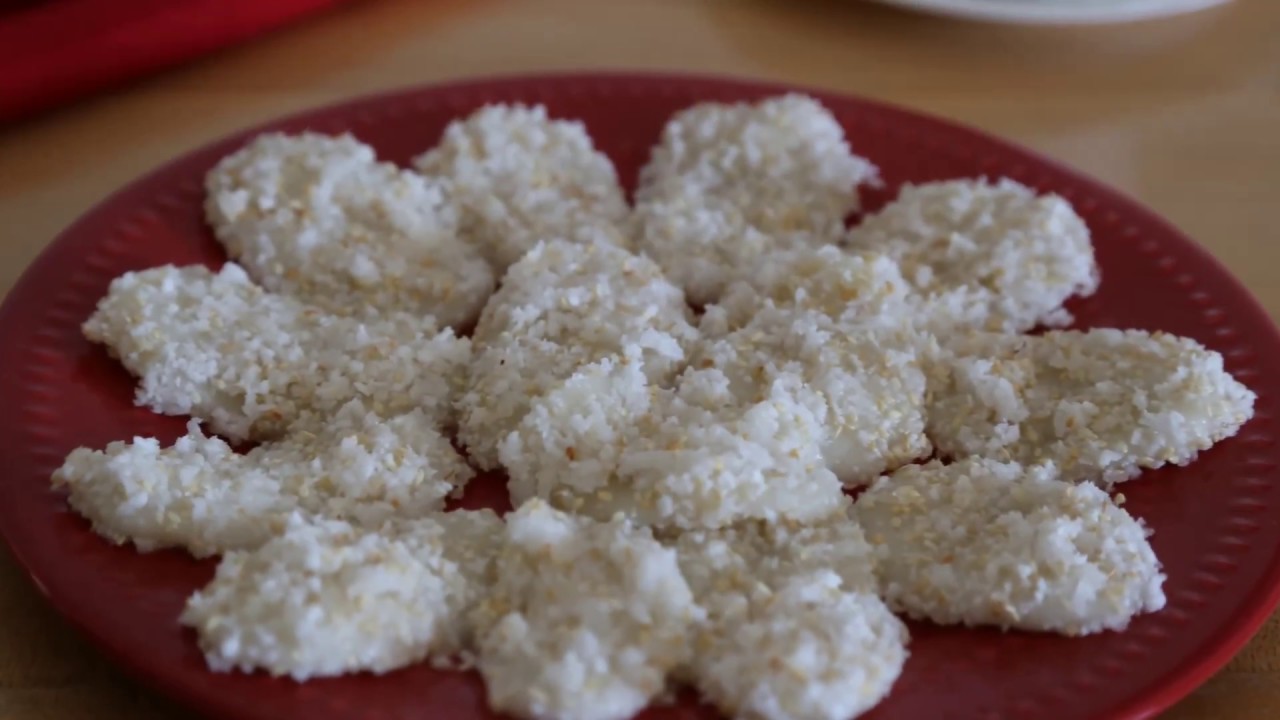
Palitaw is a flat, sweet rice cake made from washed, soaked and ground malagkit, or ground glutinous rice. Its dough is formed unto thin patties and cooked in boiling oil. Although ordinary rice flour is also used in preparing palitaw, glutinous rice is a better choice. It is often garnished with grated coconut, toasted sesame seeds, and sugar.
Ice candy
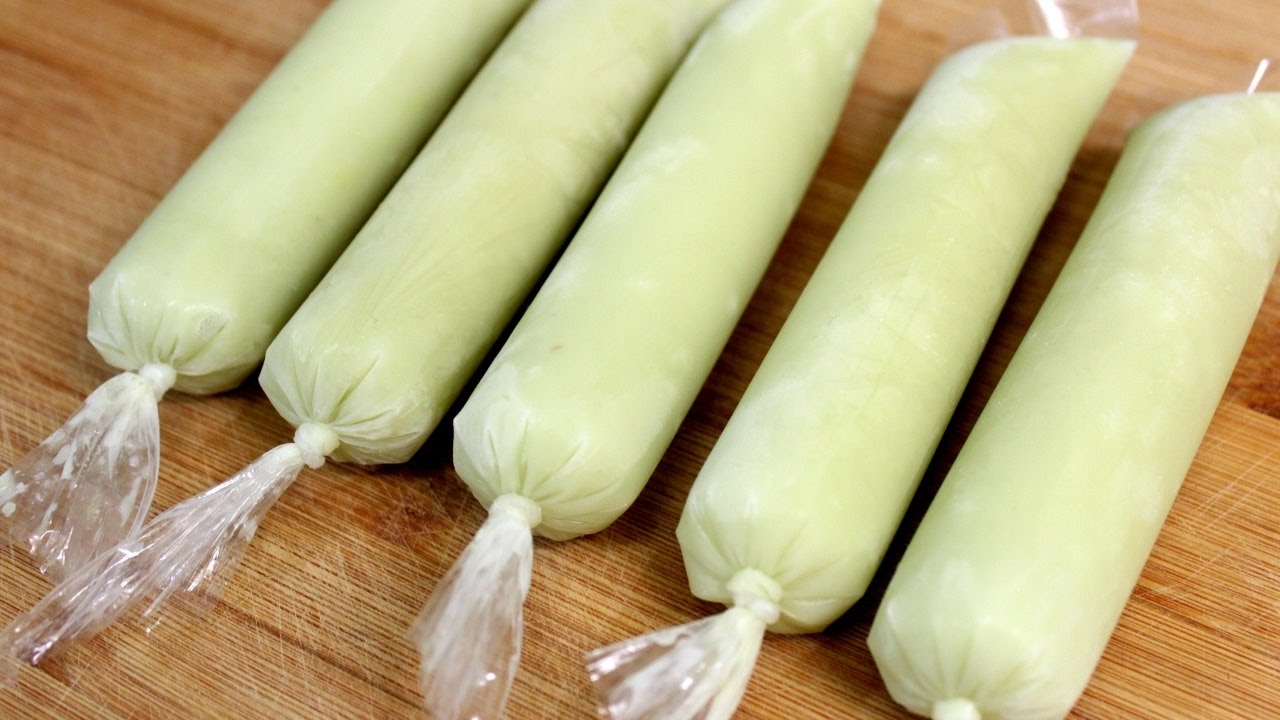
Ice candy is the handy Filipino version of American popsicle. The concoction of mango, avocado, durian, jackfruit, or buko macapuno mixed with sugar and milk is packaged into small plastic cylindrical casings and stored in the freezer. Sold at sari-sari stores, ice candy is a cheap refreshment loved by all.
Kwek Kwek
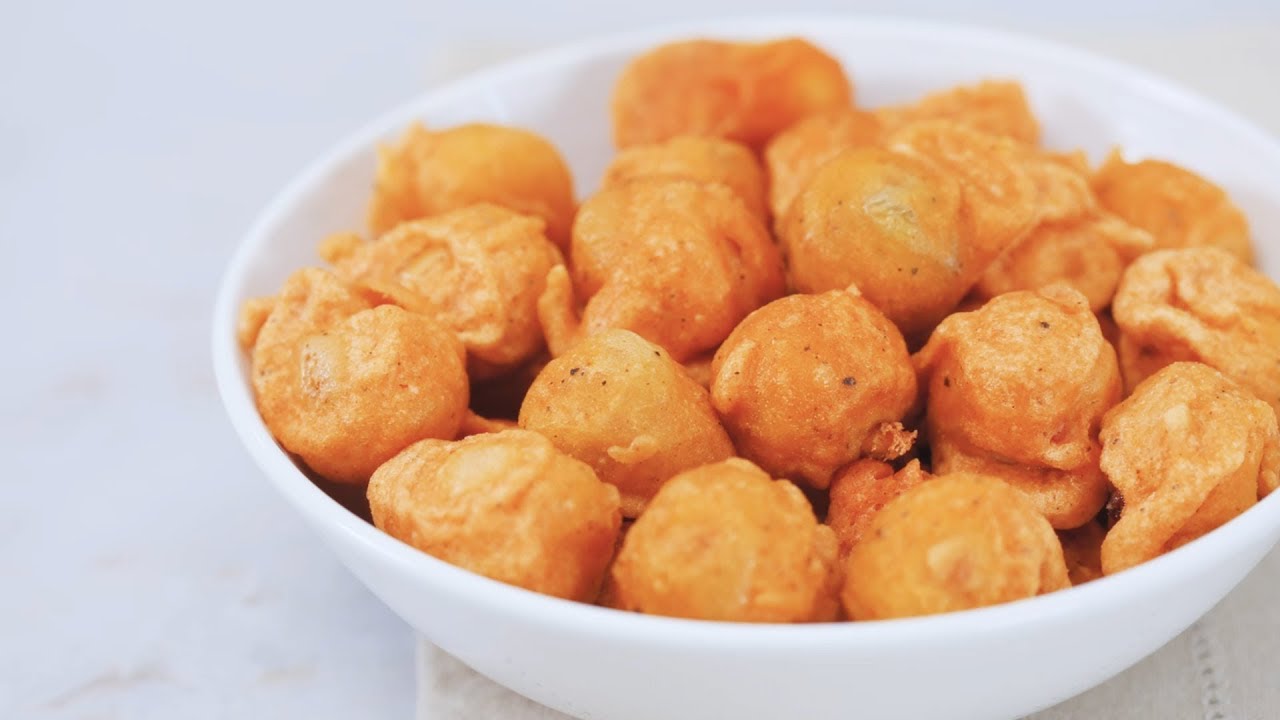
Kwek kwek, also known as tokneneng, is a popular Filipino street food made by deep-frying hard-boiled quail eggs that are covered with orange batter. It is fried until crispy, then served with a sweet-and-sour style dipping sauce.
Pastillas
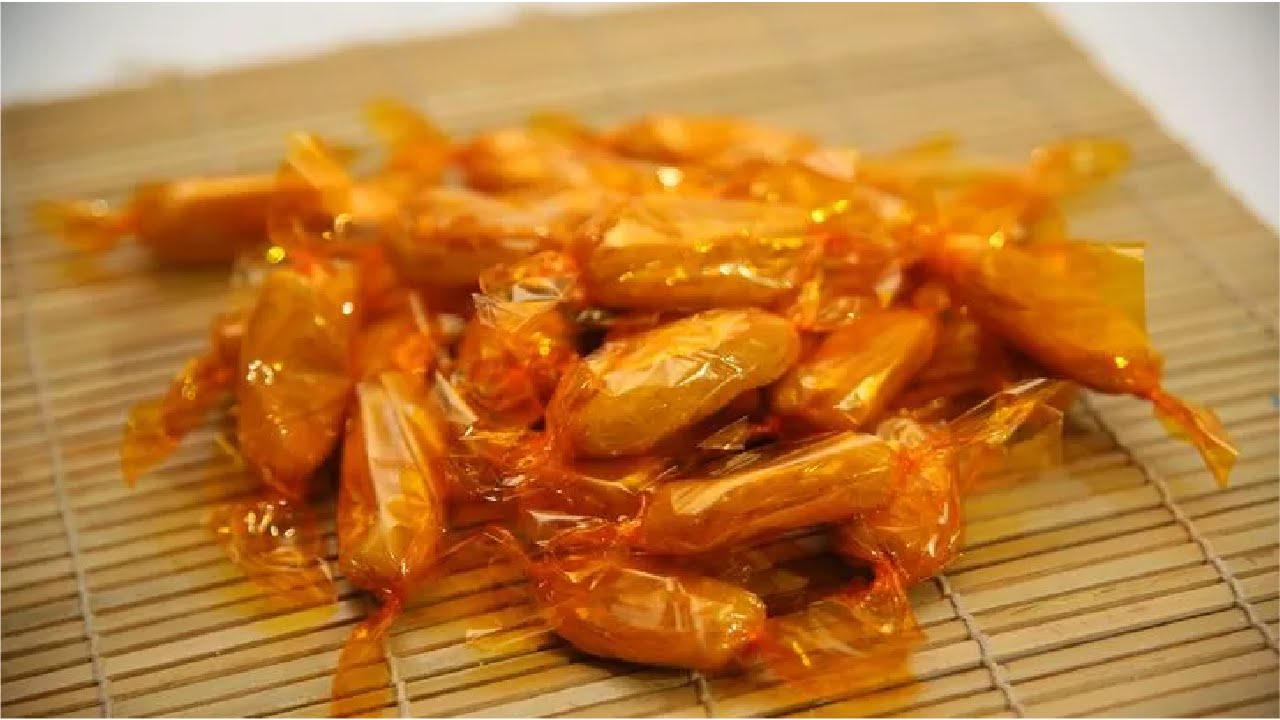
Pastillas is a milk-based sweet confectionery dessert whose origin is traced from the province of Bulacan. It is made of powdered milk, condensed milk, melted butter and grated cheese. However, an authentic ingredient consists of milk from water buffalo/carabao. Ingredients are mixed and formed into small bite-size balls or thin cylinders. Rolled in sugar and wrapped in transparent plastic sheets, it’s a popular pasalubong item or sold together with bakery and pastry products.
Polvoron
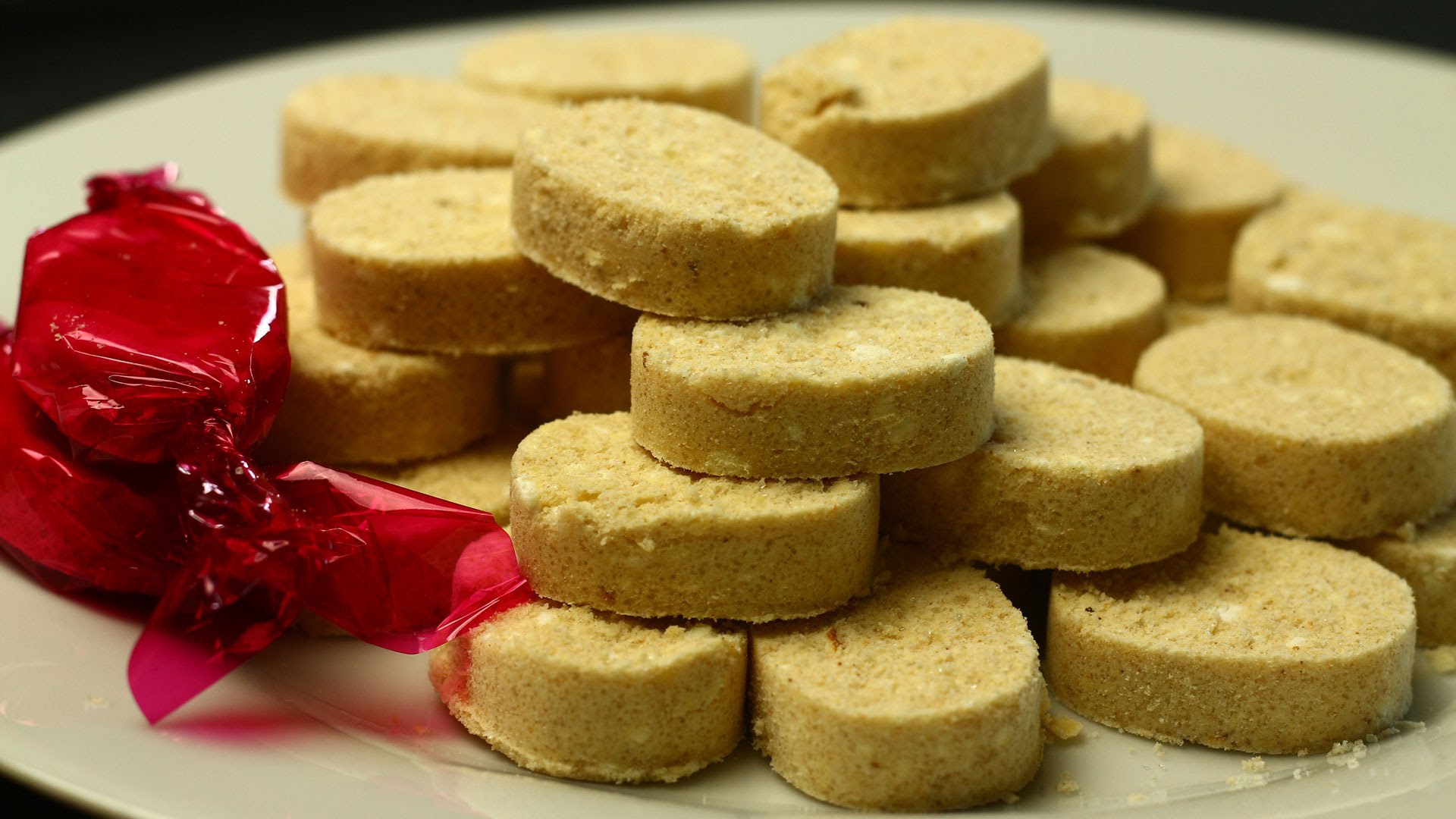
Polvorón is a Filipino-style shortbread made with brown, toasted rice flour, powdered milk, sugar, butter, and sometimes mixed with nuts. Flour is toasted over the frying pan, once golden brown, it is placed on a mixing bowl to combine with other ingredients. It’s a popular dessert that the renowned Goldilocks pastry chain also offers this product on its shelves.
Maiz Con Hielo
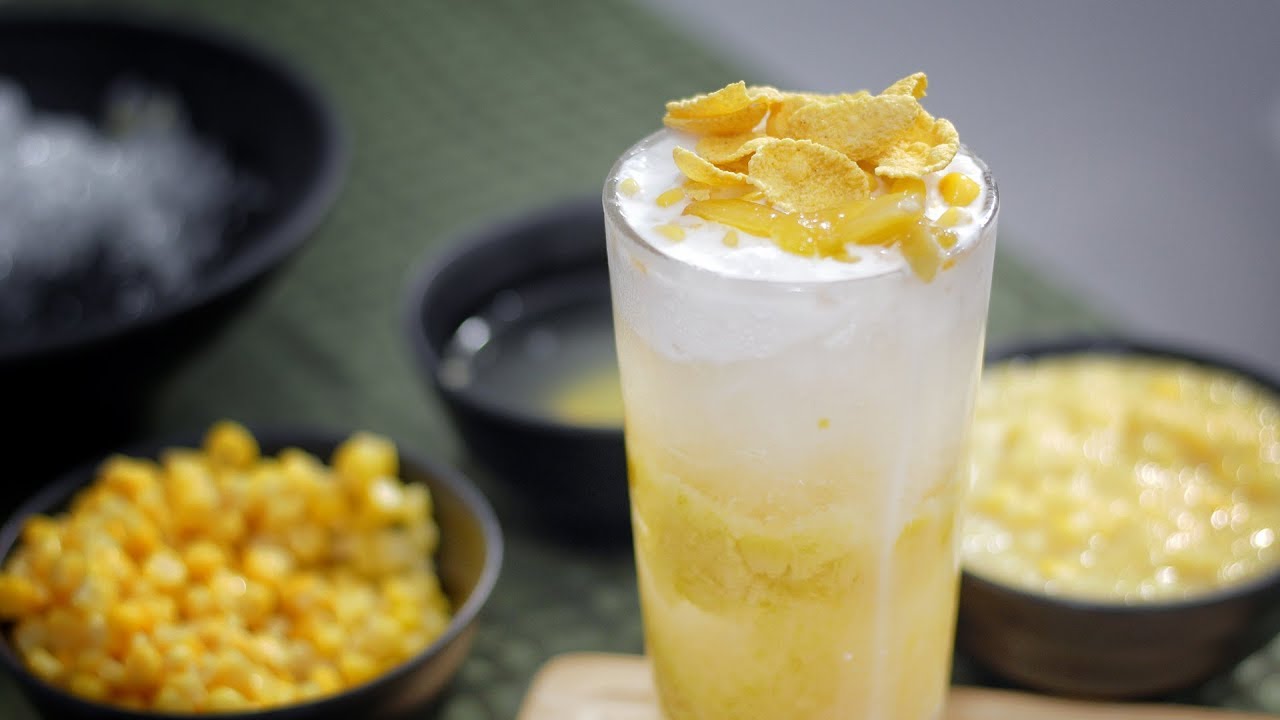
Maíz con hielo, commonly spelled mais con yelo in the Philippines, literally means corn with ice in local dialect. It is a sweet refreshment popular during hot summers. It’s both the texture and creaminess that make maíz con hielo a refreshing and tasty dessert.
Suman
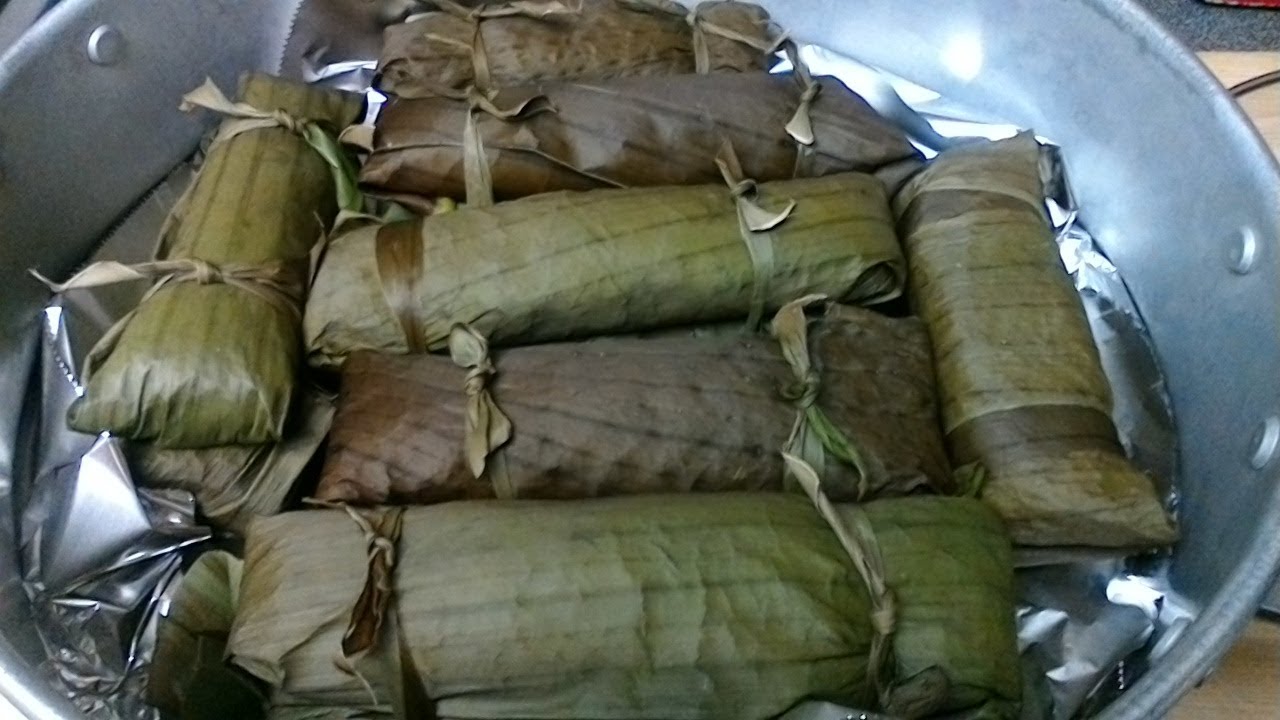
Suman is a rice cake made from glutinous rice cooked in coconut milk, often wrapped in banana leaves or buli or buri palm leaves for steaming. There are a variety of main ingredients besides glutinous rice: kamoteng kahoy (cassava), banana, and more. Additional elements, including coconut caramel sauce, enhance its flavor.
Piyaya
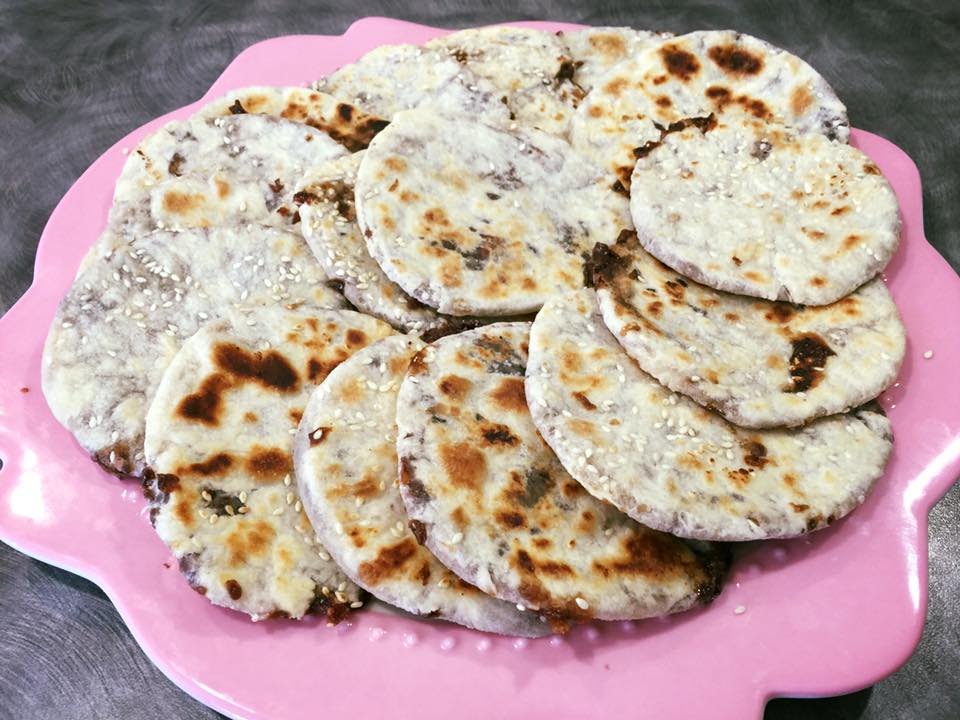
A piaya is a muscovado-filled unleavened flatbread commonly found in Negros Occidental, where it is a popular delicacy. It is made by filling the flatbread dough with a mixture of muscovado (unrefined cane sugar) and glucose syrup. A popular souvenir item for travelers in Bacolod and other places in the province, it is sold at pasalubong shops, transport terminals, and the airport.
Peanut Brittle
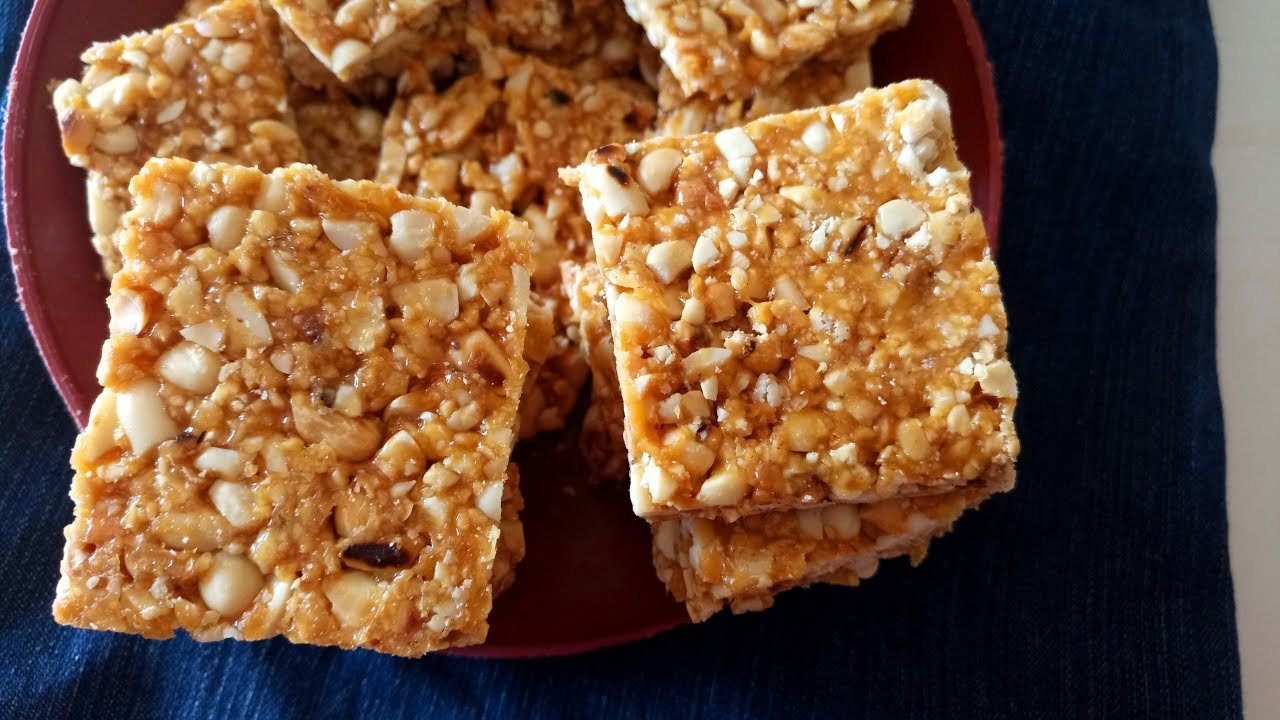
Peanut brittle is a type of confectionery popularly sold in Baguio City as souvenir food. It consists of flat broken pieces of hard sugar candy embedded with nuts such as pecans, almonds, or peanuts. It also has variations from other countries, including France, India, Georgia, and Bangladesh. A mixture of sugar and water is heated to the hard crack stage corresponding to a specific temperature. Nuts are then mixed with the caramelized sugar. The hot candy is poured out onto a flat surface for cooling, and when the brittle cools, it is broken into pieces.
Maja Blanca
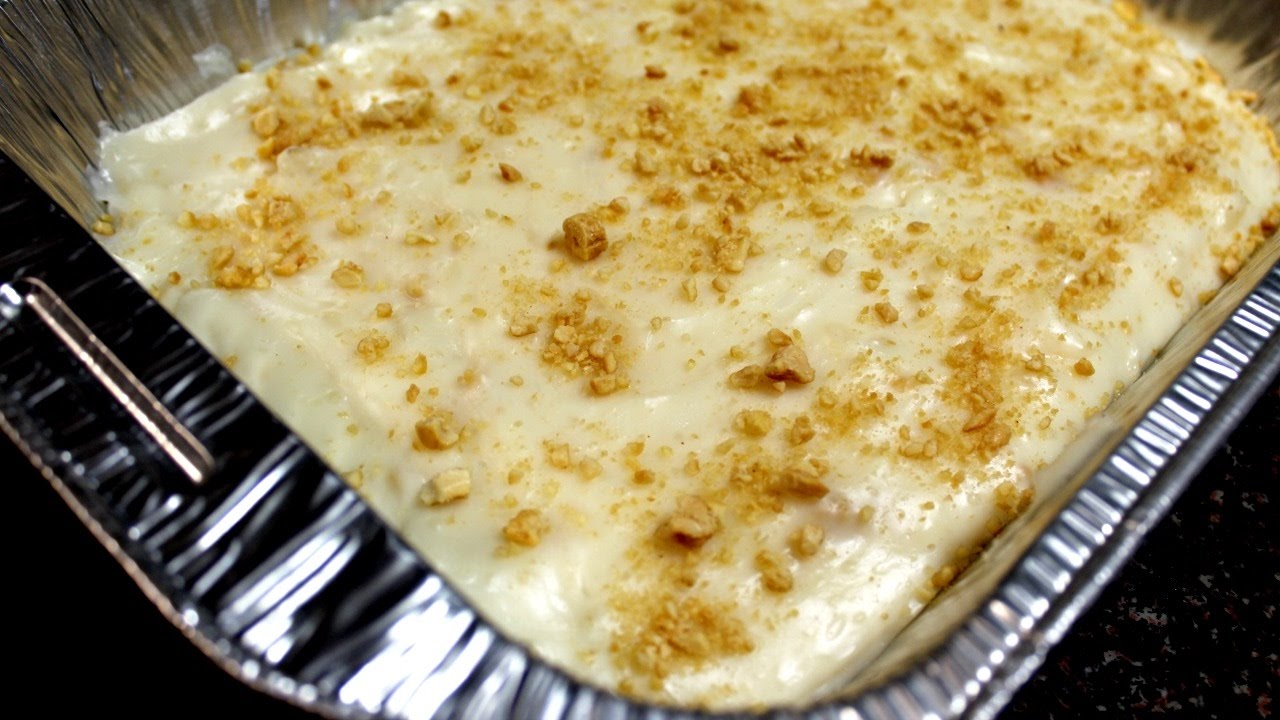
Maja blanca, also known as coconut pudding, is a Filipino dessert made primarily from coconut milk and is often available as a home-made treat. It is usually served during fiestas and holidays, especially Christmas. This luscious dessert is easy to make, and the ingredients are widely available.
Gulaman
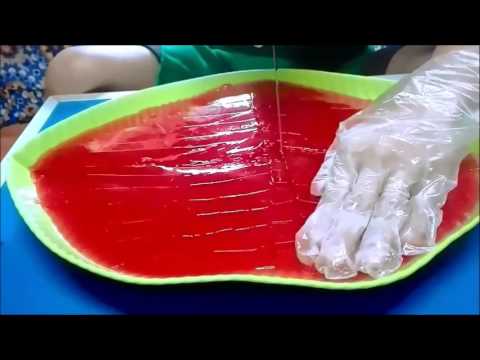
Gulaman, sometimes referred to as samalamaig, refers to the bars of dried agar used to make jelly-like dessert refreshments. They are usually found sold at roadside stalls.
Cassava Cake
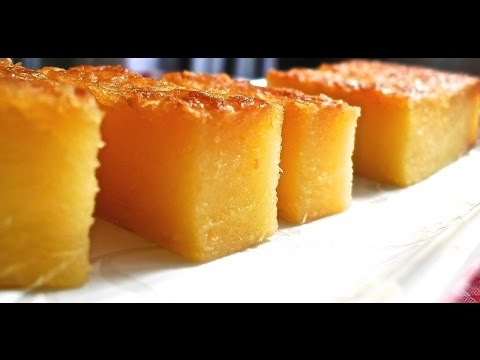
Cassava cake is a Filipino dessert made from grated cassava (also known as kamoteng kahoy and balanghoy in the Philippines). Grated cheese topping perfectly complements these sweet and tender cassava cakes.
Sans Rival

Sans rival (French for without rival) is a Filipino layered dessert cake made of buttercream, meringue, and chopped cashews. The cake may be decorated, left plain or garnished with pistachios.
Tropical Ice Cream
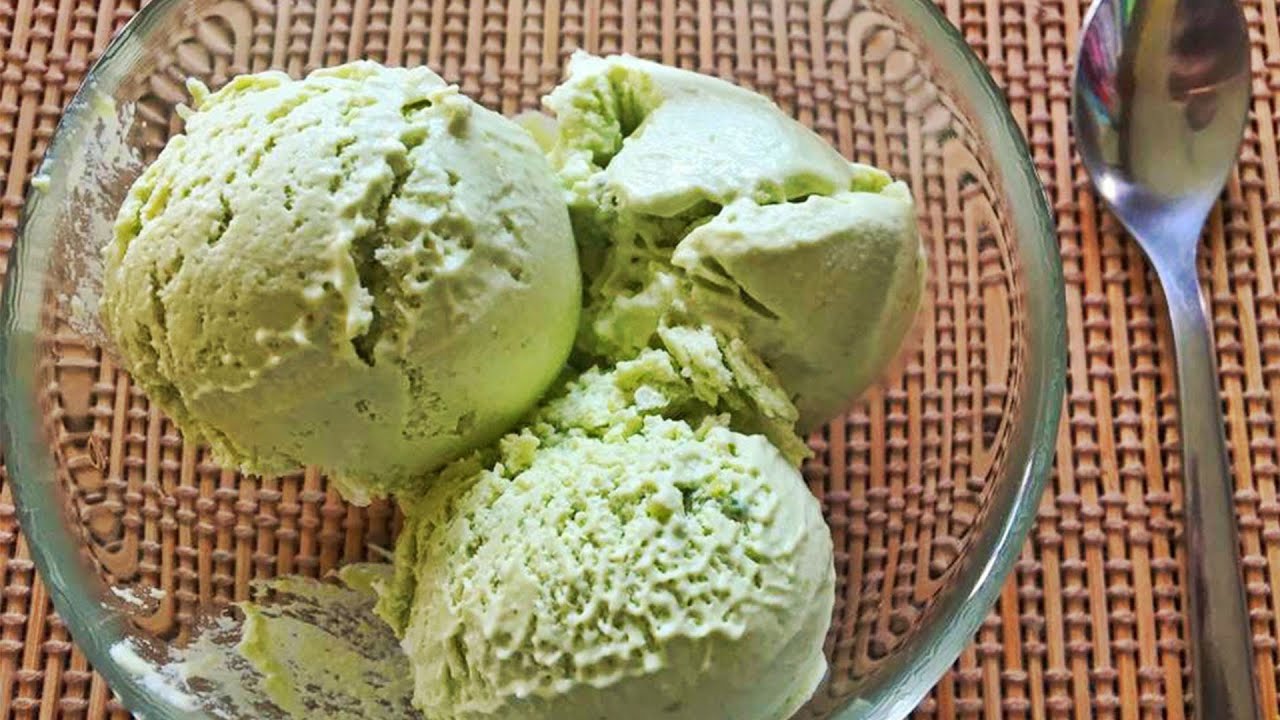
Ice cream can be deliciously made at home in the Philippines, and Filipino creativity can transform different ingredients into a sweet, refreshing dessert. Ube, avocado, mango, and buko are just some of the commonly used elements that surely is a treat — whether sweet tooth or not.
